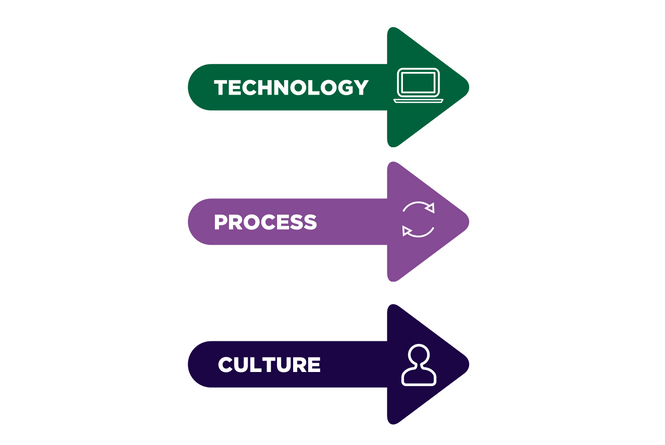Do you assume people will adopt your new knowledge management initiative, or is adoption something you are actively investing in? Resistance can be the death knell for a KM project, and can lead to technology being left unused, processes being ignored, and knowledge being hoarded.
If you’re currently experiencing some of these challenges, a change management strategy can help. One of the key benefits of a change strategy is that it creates opportunities to have conversations with end users and stakeholders, and learn how to communicate in the user’s terms. As a result of these conversations, users and stakeholders will better understand the value and outcomes of the KM project. The more conversations, the better: for a change strategy to be most effective, it should be included in a KM project at all stages of the process, including the very beginning.
Here’s how we have applied change management techniques to KM projects at EK:
 1. Technology Changes
1. Technology Changes
Nearly all knowledge management projects involve some sort of technology, such as an intranet site, social media tool, or wiki collaboration platform. Resistance to these tools often looks like a sad, blank tool that is gathering dust.
In my experience, many of these change failures can be prevented by tailoring end user training to the value the technology actually adds to people’s daily work. For example, I’ve taught basic SharePoint classes on the benefits of version control, co-authoring, and storing files outside of an email platform. For groups that are less tech-savvy, these simple lessons are much more impactful than teaching them about why they should stop using navigation and start using search to find documents.
2. Process Changes
Knowledge management frameworks are often built around processes: content authors need to tag their content correctly, admins need to follow a records management schedule, or staff needs to follow a standard publishing process.
The change management principle of co-creation can help with process changes. A new process that’s designed without the input of the people actually using it will almost certainly fail, by leading to workarounds. For example, in terms of a publishing process, a low percentage of “emergency” publishing will be a good indicator of success. In addition, taking an agile approach to content development and gradually improving processes over time will help make change manageable.
3. Cultural Changes
Promoting knowledge sharing and growing communities of practice are cultural aspects of many knowledge management projects. These types of changes are often the most difficult to manage because they are difficult to “force” – they address behaviors and habits that are ingrained in an organization.
Applying change networks can help you surface issues and build excitement and trust in these cases. A change network is a group of people outside of the management team who is serving as “ambassadors” for the change. They are a motivated group that will help spread the value of KM and will bring issues to the group that people don’t feel comfortable saying publicly. In the past, I have also used a change network as an informal focus group to test project communications, new tools, and other KM ideas.
Is your organization struggling with adoption issues in your knowledge management project? We can help. Contact us at info@enterprise-knowledge.com.
